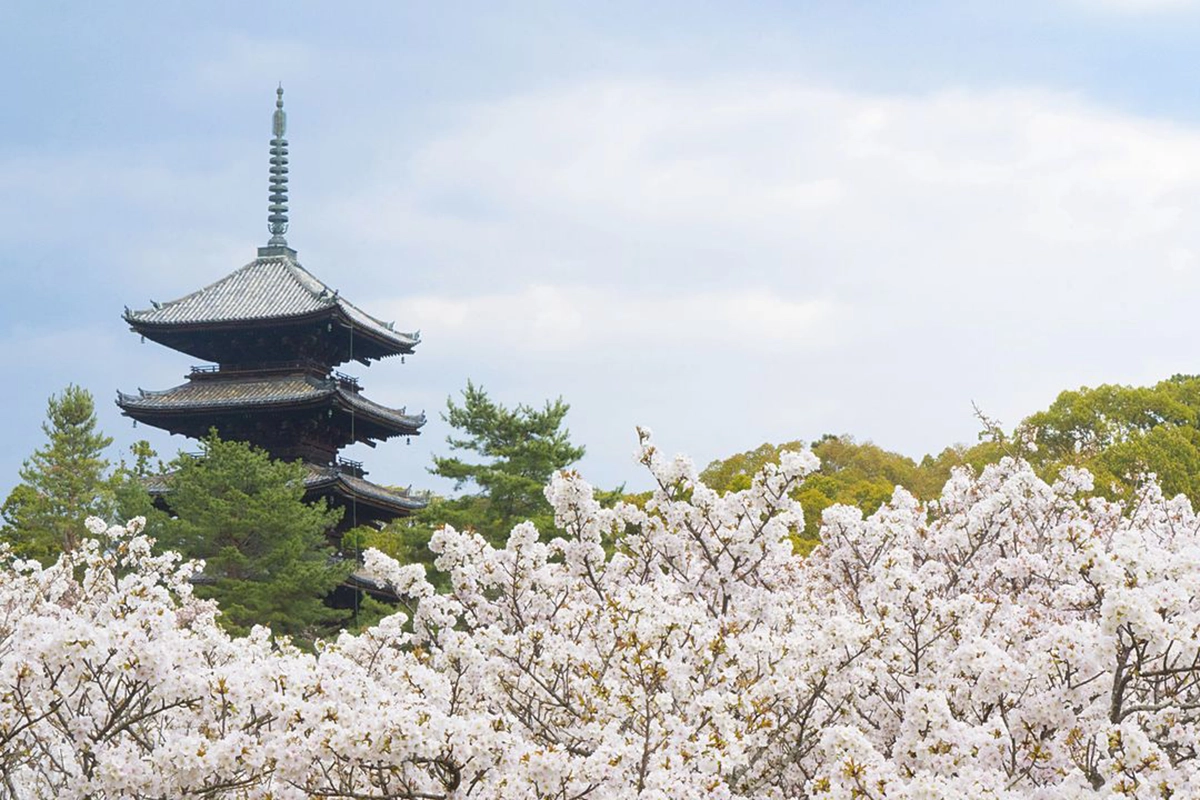Ninna-ji: A Timeless Journey through Kyoto’s Enigmatic Heritage
As you step into the serene heart of Kyoto, the city of a thousand temples, you’re bound to discover the remarkable Ninna-ji, a UNESCO World Heritage Site steeped in over a millennium of history. Nestled in the tranquil northwest corner of Kyoto, Japan, this enchanting temple offers a captivating blend of architectural styles, sprawling gardens, and towering pagodas that will transport you to a bygone era.
A Glimpse of History
Established in 888 by Emperor Uda, Ninna-ji initially served as a grand imperial palace, but with the passage of time, it metamorphosed into a sacred temple, preserving centuries of cultural heritage within its precincts. The temple’s illustrious history unfolds in a tapestry of renovations and expansions, each layer of transformation adding a unique touch to the architectural landscape.
The Allure of Architectural Fusion
Ninna-ji’s charm lies in its architectural fusion, where the past harmoniously intertwines with the present. The Goten Palace, constructed in the early 17th century, showcases captivating designs and intricate embellishments, a testament to the creative prowess of that era. As you wander through its halls, admire the enchanting paintings by renowned artists, which adorn the palace’s walls, narrating tales of artistic excellence.
Rising to Great Heights
A symbol of grandeur and spirituality, the five-story pagoda at Ninna-ji majestically soars to a height of 34 meters, making it one of Japan’s tallest pagodas. Built during the 17th century, it exemplifies the harmonious blend of Japanese and Chinese architectural styles, a visual feast for architectural enthusiasts and spiritual seekers alike. As you stand beneath its towering presence, it evokes a profound sense of wonder and reverence.
Hidden Gems Amongst History
Ninna-ji boasts more than just its iconic structures. The temple’s treasure trove of history includes the Kannon-do Hall, which houses a serene statue of Kannon, the Buddhist goddess of mercy. Marvel at the intricacies of the roof adorned with mythical creatures as you delve into the spiritual ambiance of this sacred space.
The Omuro Palace, once the residence of emperors, is a haven of tranquility that beckons visitors, especially during the enchanting cherry blossom season. Stroll through its enchanting garden, adorned with sakura blossoms, and let the beauty of the moment envelop your senses.
The Sentei Garden, a traditional Japanese garden, offers a refreshing retreat, where a large pond reflects the sky, a gentle waterfall serenades your soul, and a teahouse invites you to savor the simplicity of a traditional Japanese tea ceremony. The garden is a true embodiment of Zen philosophy, fostering a sense of peace and serenity.
Unveiling the Timeless Beauty of Ninna-ji
As you explore the expansive grounds covering approximately 10 hectares, you’ll find yourself enchanted by the traditional Japanese garden that surrounds the temple. Each step takes you deeper into a world where nature and history coexist, where past and present intertwine.
Ninna-ji is not merely a temple but a living testament to Japan’s rich cultural heritage, a repository of stories and traditions that have been lovingly preserved and celebrated for centuries. The temple’s historical significance is a testament to its enduring allure, drawing travelers, history enthusiasts, and spiritual seekers from all corners of the world.
Ninna-ji, with its captivating blend of architectural marvels, serene gardens, and spiritual ambiance, invites you to embark on a timeless journey through Kyoto’s enigmatic heritage. Whether you’re seeking solace, cultural immersion, or a glimpse into the past, Ninna-ji offers an experience that transcends time and leaves an indelible mark on your heart. Discover the stories, feel the serenity, and immerse yourself in the beauty of this remarkable temple, where history unfolds with every step you take.
